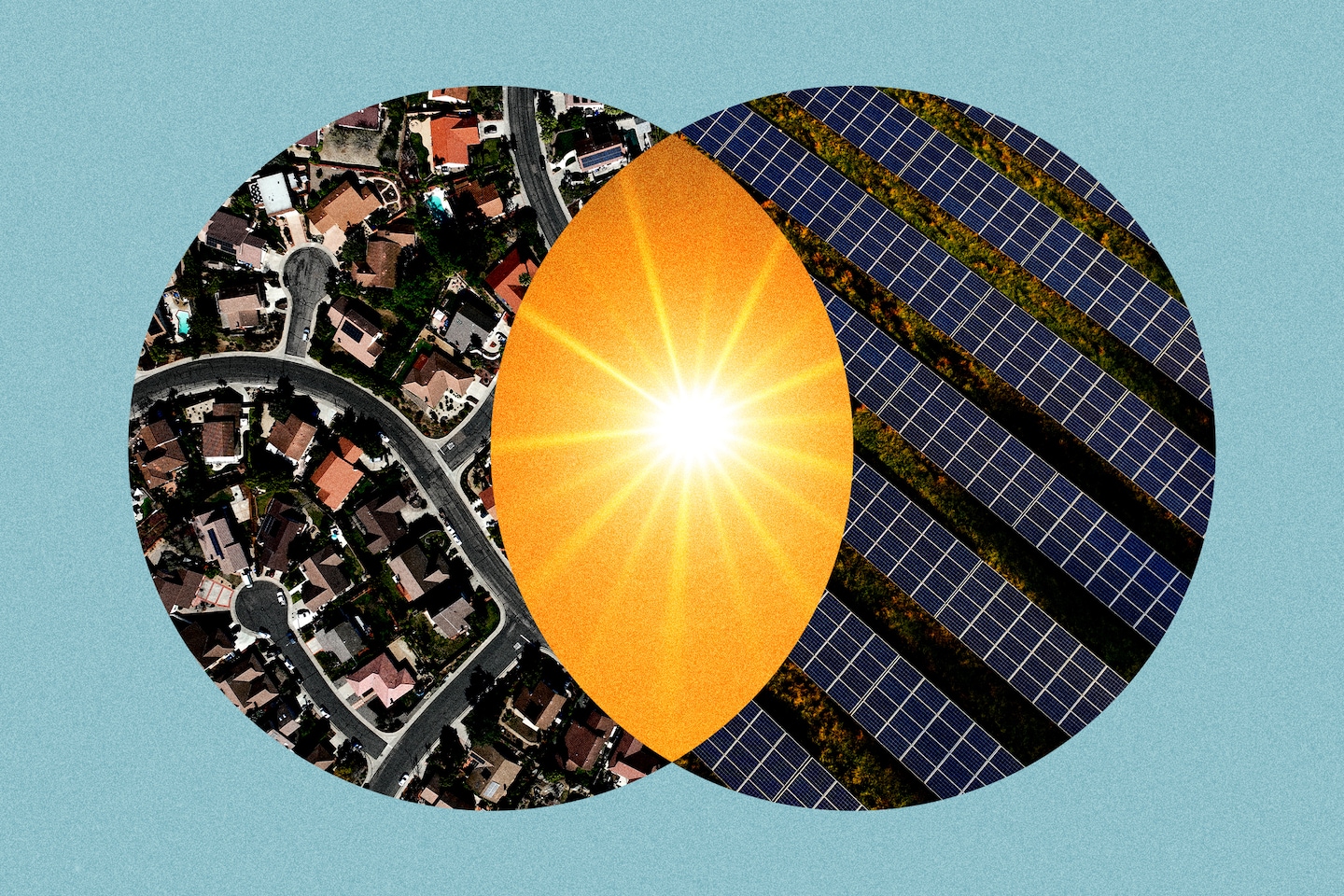Scores of new small solar farms that sell clean, local electricity directly to customers are popping up. The setup, dubbed “community solar,” is designed to bring solar power to people who don’t own their own homes or can’t install panels — often at prices below retail electricity rates.



The “half of americans” in the headline is those that live in apartment buildings.
While community solar is indeed awesome, we need to have apartment and commercial buildings install solar as well.
I think it is also ok to accept that cities won’t produce all that they consume. They need to import food, water, makes sense that they import energy too.
Tucson, Arizona in the Sonoran Desert receives more rainfall annually than the amount of water sourced municipally. In other words, even in a desert city like Tucson, there’s no need to import water. We are wasteful not by nature but by habit, and that can be changed. Rainwater harvesting with thoughtful usage, mulching and locally-appropriate plants and greywater provide all the water necessary except in the most extreme environments such as Death Valley. But even in Death Valley a single family home could provide all its own water through the above if they were also doing solar distillation and reuse.
With proper management and cultural development, cities can provide all their own water and energy and a substantial portion of food.
Had never made the calculation about water, but it makes sense thanks. Thing is, we usually consume ground water that has been filtered after being rained, that explains the need to import, otherwise we need a lot of artificial filtration, which would also probably remove a lot of water circulation within the ecosystem. Doable but not necessarily with a lower impact.
According to Rainwater Harvesting for Drylands and Beyond (volume 1, 3rd edition) by Brad Lancaster, page 249, an example household doing water harvesting and reuse, saves between 80kWh and 97kWh per month and between 174 pounds (78.8kg) and 211 pounds (95.5kg) of CO2 emissions. That’s a huge win for rainwater harvesting and greywater.
Rooftop solar and wind also save a ton of water since traditional generation methods of burning fossil fuels need lots of water.
And according to the same book, page 240, here are some kWh/gallon ranges of various water sources:
I am curious about how he gets to that numbers. Is he only counting transport? You need filtration, you need treatment, you may need pumping if you want any kind of pressure. And when all these are taken into account, I have a hard time believing that the economies of scale do not compensate for the transport.
You can ask him, or read his book. He’s spent decades working on water.
Have you installed and used rainwater harvesting and greywater systems? It sounds like you haven’t. They’re remarkably simple.
I haven’t but lived in a community where people do. They need additional filtration (activated charcoal) which of course they used their car to buy or got delivered. They did not have good pressure with it either. Hence me asking what is really compared. Water distribution networks are also remarkably simple, so I am a bit curious about how he gets with the idea that people reproducing a thousand times what we have in a less efficient way is going to be more efficient overall.
Sorry, I don’t want to sound confrontational, I am just trying to get data on that.
Here’s a video showing Brad Lancaster’s permaculture house in Tucson, AZ:
https://youtu.be/KcAMXm9zITg?t=1715
I linked directly to a spot showing him getting good water pressure with only 2.5 feet (less than a meter) of head.
In other parts of the video he talks about filtration. You can watch the video yourself, it’s awesome. I hope it inspires you.
It sounds like the place you lived is not a great example of rainwater harvesting and greywater, like they didn’t really know what they were doing and cobbled together something mediocre. Do you think that water issues in Flint, Michigan are an indictment against the conventional water system? Or in India? I don’t blame you for having a bad personal experience with something and concluding that that thing is bad. That’s just how it goes. But take a step back and realize that the questions you have are solved problems. It’s just that most people are unaware and many are resistant to change.
The fact that the conventional water system is starting to run out of water in some desert areas, and that the problem is growing, is proof in itself that this system is unsustainable. So we need less pushback and more engaged interest.
Quoting Wikipedia from the Central Arizona Project article:
“The 456 billion gallons (1.4 million acre feet) of water is lifted by up to 2,900 feet by 14 pumps using 2.5 million MWh of electricity each year, making CAP the largest power user in Arizona.”
That is not simple at all.
“The canal loses approximately 16,000 acre-feet (5.2 billion gallons) of water each year to evaporation, a figure that will only increase as temperatures rise.”
https://en.wikipedia.org/wiki/Central_Arizona_Project
I’d love to have solar, but my HOA won’t allow it :(
I agree but just want to add that at least some people in apartments and condos can still produce and use solar-generated electricity. Here’s a cool example:
https://arstechnica.com/science/2023/01/i-disconnected-from-the-electric-grid-for-8-months-in-manhattan/
Although I have rooftop solar producing around 200% of our usage annually, I was inspired by this story and have been increasingly using our offgrid LFP (LiFePO4 / lithium iron phosphate) backup batteries with solar panels to power certain things.
I think people in apartments would need rooftop access (ideally), equator-facing windows or a balcony, at the very least, for this to make ecological sense as there’s a carbon cost to manufacturing batteries and solar panels. But it’s doable and some people are doing it!
Here’s another:
https://solar.lowtechmagazine.com/about/the-solar-website/